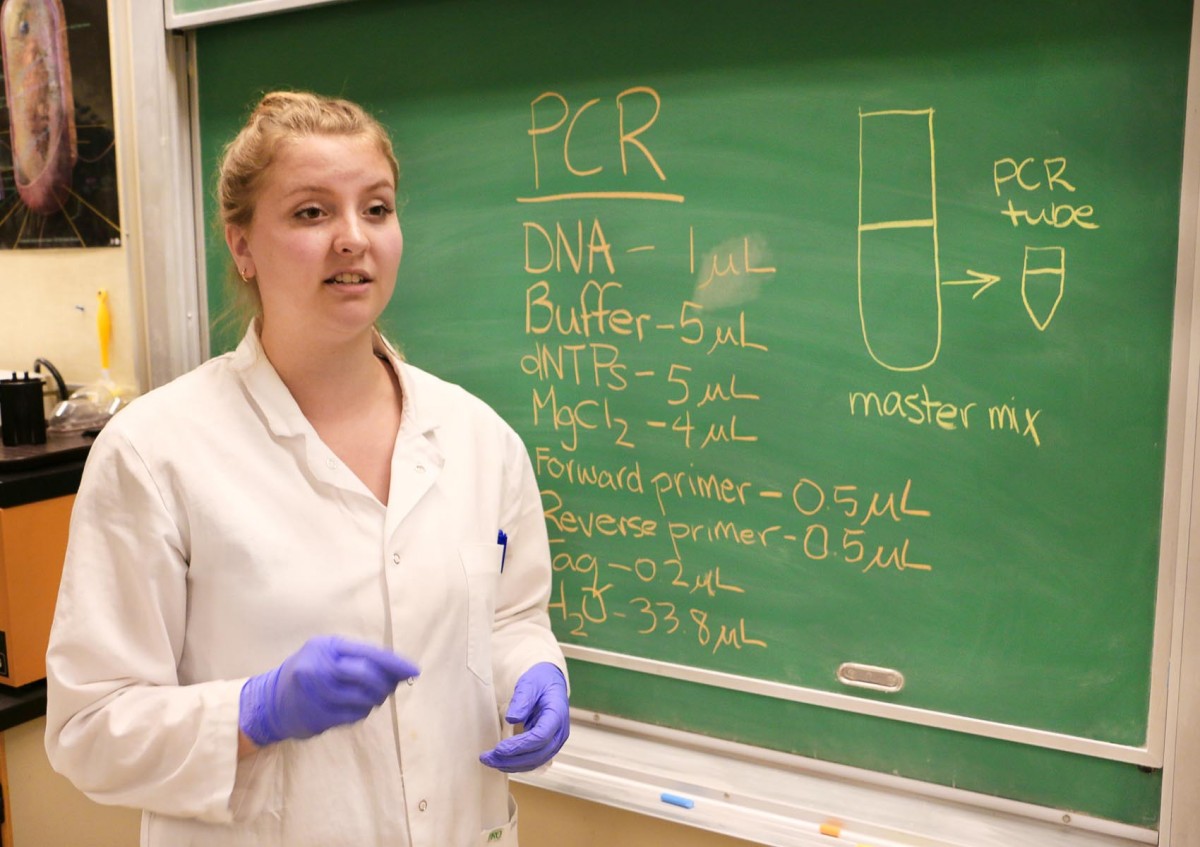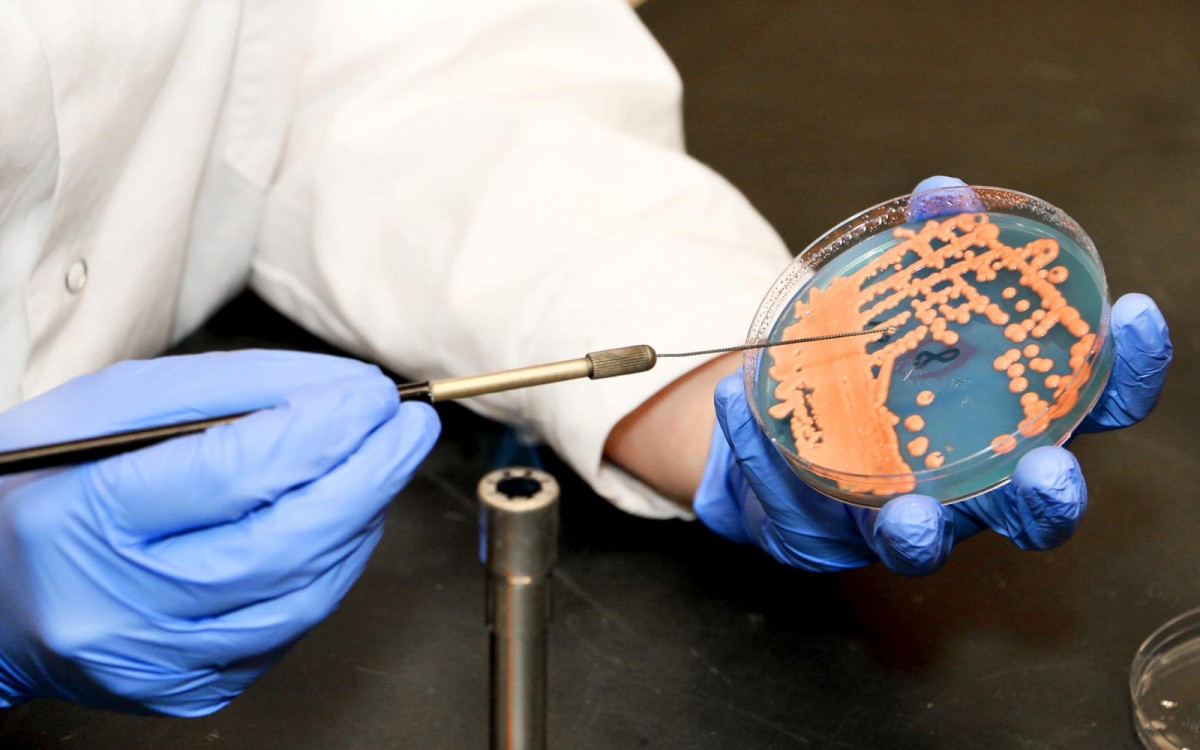
Richenda McFarlane with some cultures grown from cave bacteria.
Each time she looks through a microscope to better understand cave bacteria, Richenda McFarlane may also be staring at life that’s centuries old or perhaps even something from another planets.
She’s getting to play researcher, time traveler and astronaut all at the same time.
“Because cave environments are closed off and often so extreme, they don’t change much over time,” said McFarlane. “I’ve heard cave life being equated with ancient life or life on other planets. If the bacteria was there in ancient times, it’s probably very similar to what is there today.”
And because caves can be twisty with tiny entrances and little or no opportunities for air movement, gases like nitrogen dioxide, methane, sulphur and others have the potential to build up to lethal concentrations and in doing so, mirror the environments of other planets.
“That means we can use what we know in caves to find life on Mars and other planets because if it’s there on Mars, it’s probably hiding in something like a cave on Earth.”
She is spending this summer studying bacteria collected from two different caves in North America as part of faculty member Dr. Naowarat (Ann) Cheeptham’s ongoing search for medical uses for cave bacteria. McFarlane’s findings will also go toward her Undergraduate Research Experience Award Program (UREAP) study called “Screening of cave microorganisms for enzyme activity”.
McFarlane is one of 26 students conducing studies this summer under the UREAP program, which provides a $4,500 scholarship to do a supervised project and is a great way to get paid while picking up valuable experience.

McFarlane discusses her research.
A fan of exploring the unknown, McFarlane said research provides the opportunity to better understand who we are and how the world works. And when the results don’t line up with what was expected or even hoped for, there’s understanding in that as well.
“To me, science is how we move forward and how we can make our lives better—how we develop new things that will be beneficial. The possibilities are just endless in science. There is a lot of research that’s already been done, but there’s so many things we still don’t know. We have the opportunity to go out and find out why these things happen and what these things are, which I think is really cool.”
Of what she’s learned so far working on Cheeptham’s project, here are some of her favourites:
- Learning different techniques and new skills
- Learning how to screen bacteria and fungi for different enzyme activities
- Learning how to extract DNA
- Learning how to amplify genes in the genome

Choosing a yeast colony to stain and view under the microscope.
The self-proclaimed “science nerd” could easily revolve her life around science, but knows the value of having other interests. Among them is playing and performing classical violin, which she has done for 15 years. As different as the two interests may seem, McFarlane sees similarities.
“Violin helps with some of my fine motor skills and helps with dedication to a task. It takes a long time to get good at violin and the same goes for science. You have to stick with it to get results, you can’t just spend a month on it and expect something will happen.”

